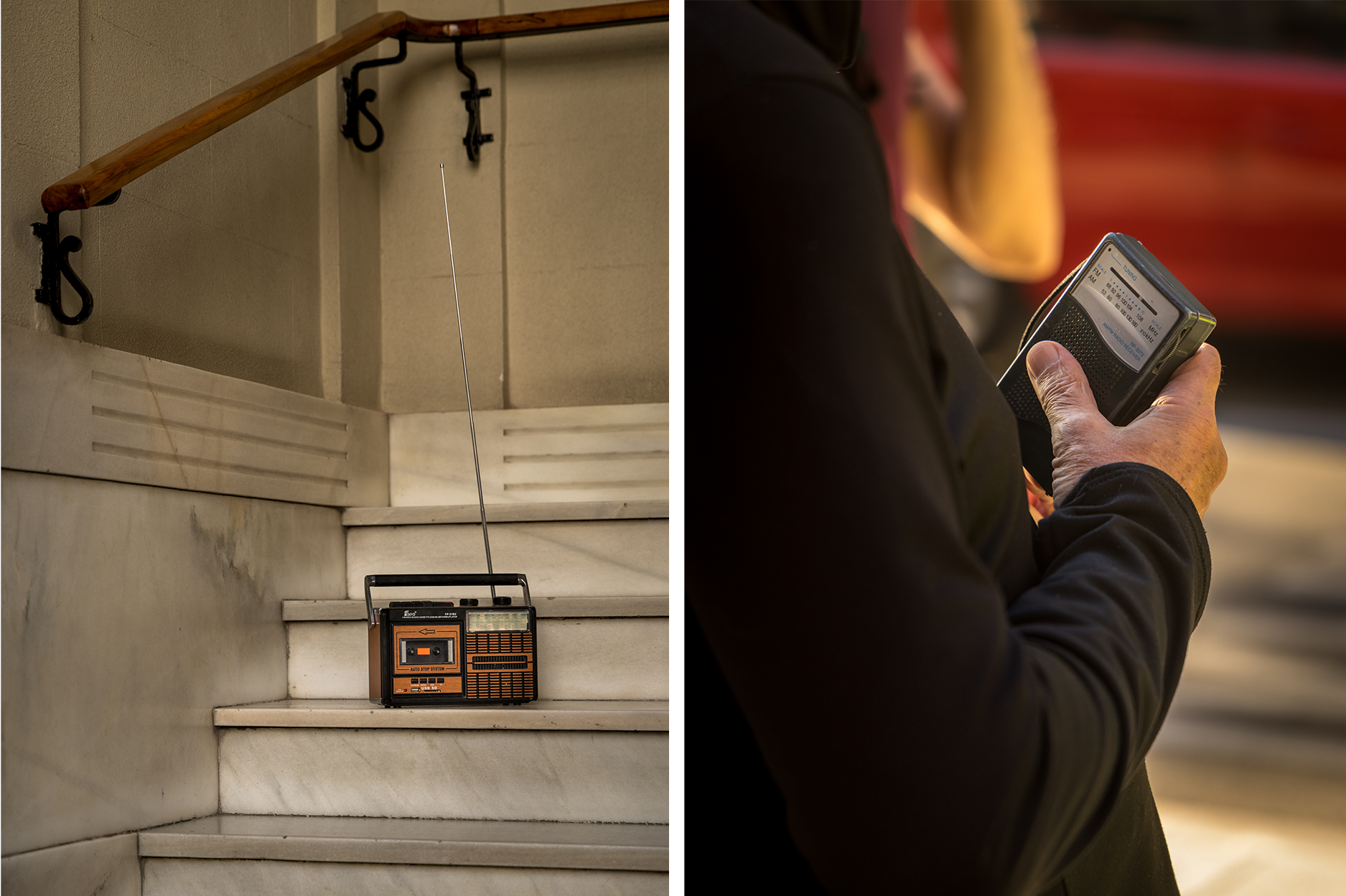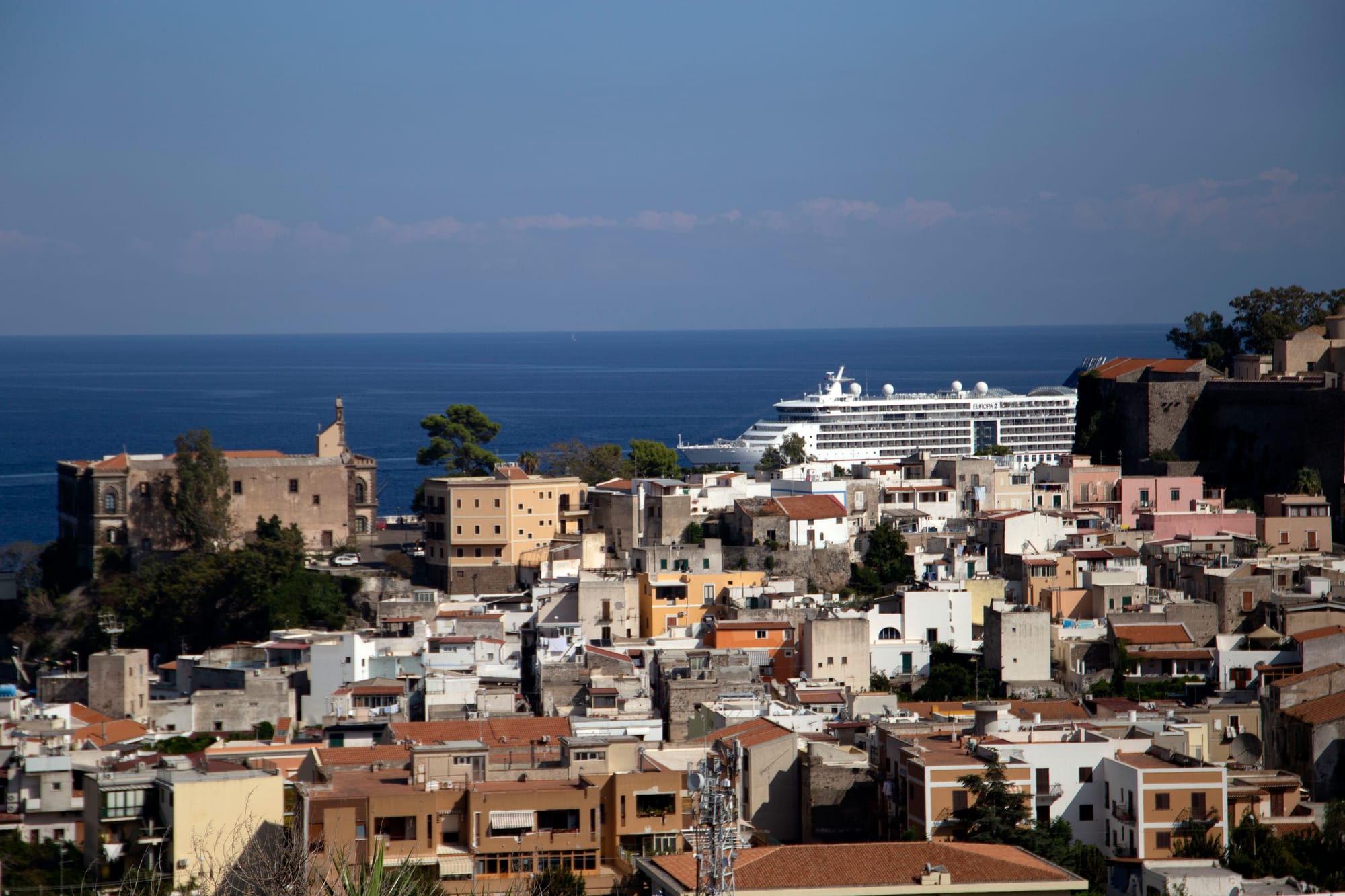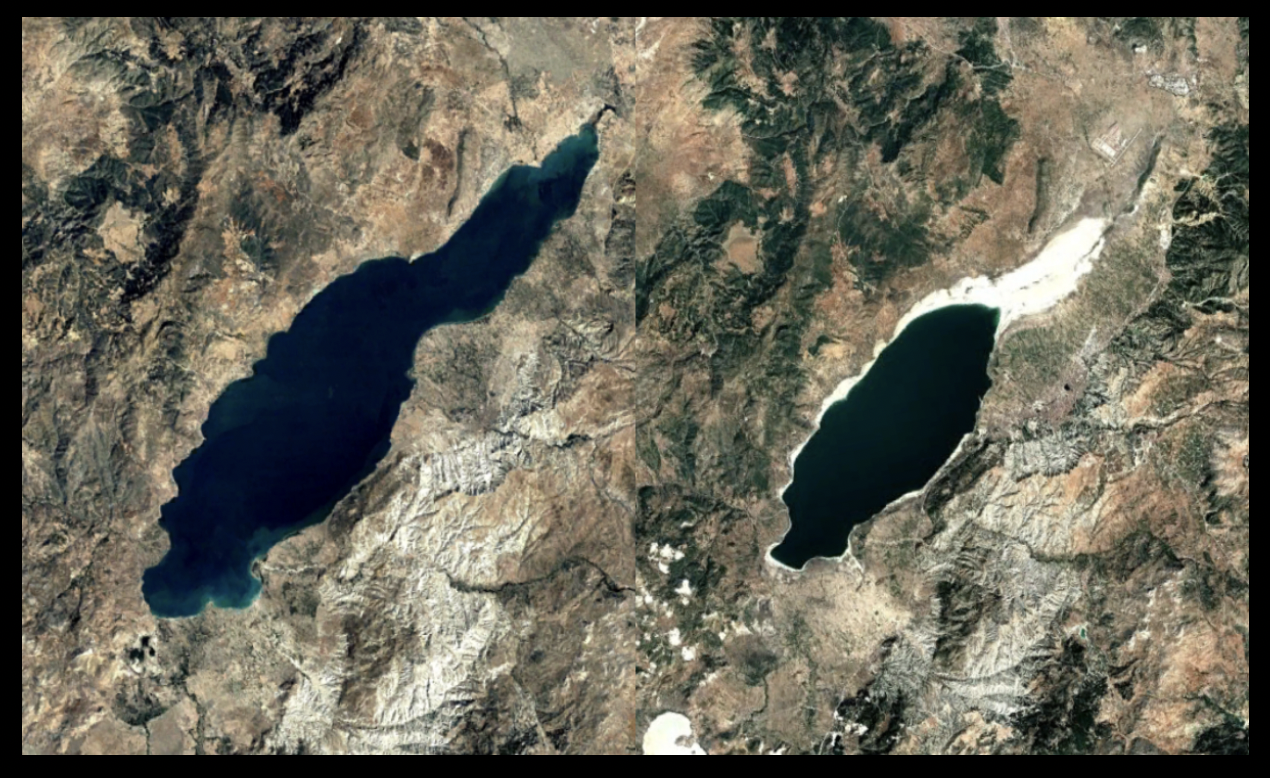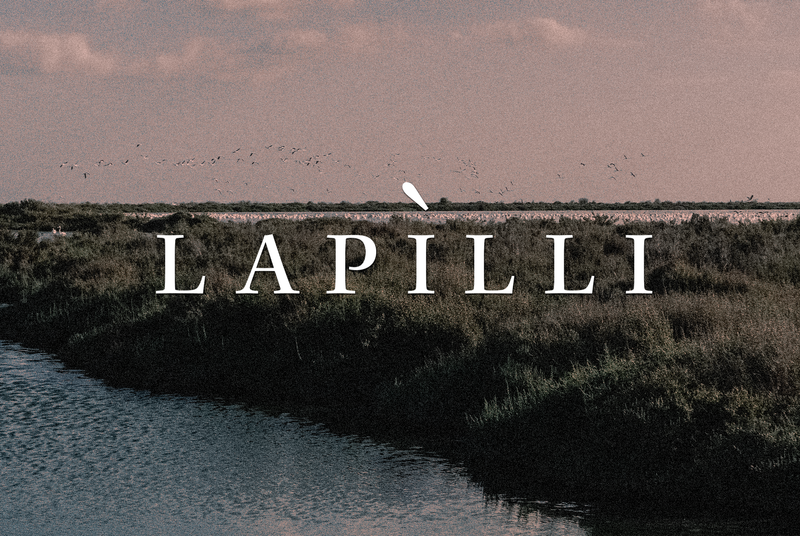In addition to covering pressing current events, this issue of Lapilli highlights several water-related stories: from heavy rainfalls to disappearing lakes in Türkiye to the lack of water on Greek islands to coastal wetlands at risk in Albania and pollution in Taranto’s inner sea.
We then head to Egypt, where a major investigation reveals how European travelers — particularly from Italy and Malta — journey there to hunt migratory birds despite the EU protection laws aimed at saving them. As always, there's much more. Happy reading!

The Iberian blackout. Spain and Portugal were left without electricity due to an unprecedented, widespread blackout on Monday. The Spanish government declared a state of emergency after trains, subways, traffic lights, airports and many more electrical necessities stopped functioning. Cell phone communications were also affected so people turned to radio to get any sorts of information. The situation was brought back under control Tuesday morning. However, the cause of the blackout is still unclear — and there may be more than one. What's known is that a sudden drop in energy on the grid triggered safety protocols that shut off electricity in the two countries to prevent damage to the network. The Spanish grid operator Red Eléctrica has ruled out a cyberattack and some Spanish public figures have questioned the reliability of energy derived from renewable sources, on which Spain increasingly depends (Reuters; BBC; The New York Times). A series of charts published by El Confidencial illustrates the dynamics that led to the collapse of the power grid.

The hottest year. The latest European State of the Climate report (or ESOTC), produced by the Copernicus Climate Change Service and the World Meteorological Organization, confirms that 2024 was the hottest year on record and that the past decade has been the warmest since data collection began. The report also highlights that Europe and its rivers are increasingly prone to overflowing and causing floods. Europe is the fastest-warming continent, a trend that is driving more intense weather events that often result in major flooding: the percentage of rivers that flooded in 2024 was the largest since 2013 and the fifth-largest in the past 32 years.
According to the report, the Mediterranean Sea recorded its highest-ever average annual surface temperature at 21.5 degrees Celsius (70.7 Fahrenheit), surpassing the previous record set in 2023 of 21.2 Celsius (70.1 Fahrenheit). In August, it also hit a new record for the highest daily surface temperature at 28.7 Celsius (83.6 Fahrenheit), breaking the mark set in July 2023 at 28.3 degrees Celsius (82.9 Fahrenheit). Finally, the report notes that Alpine glaciers lost approximately 1.2 meters (3.9 feet) of ice density in 2024, continuing a long-running trend of glacial thinning.
Heavy rainfall. April was marked by extremely heavy rainfall. In Lanzarote, Storm Olivier caused widespread flooding. In Italy — especially in the Piedmont region — rivers reached critical levels, with some overflowing due to intense rains that also brought heavy snowfall at higher elevations. Early in the month, on the Greek island of Paros, sudden flash floods turned roads into muddy torrents.
Water Returns to Doñana Wetlands. The Doñana wetlands are filling up again. Heavy rainfall in March filled the area with water, causing extensive flooding in the Doñana wetlands, in southern Spain, with a particularly strong impact on the central and western wetland areas. The rains have improved the environmental conditions of the marsh, which is also a national park and has been suffering from chronic water shortages in recent years (TodoAlicante; Phys.org).
Earthquake in Türkiye. A 6.2-magnitude earthquake, with its epicenter in the Sea of Marmara, was strongly felt in Istanbul, where many people were injured. Türkiye is one of the Mediterranean’s most seismically active countries, sitting atop several tectonic plates. Just two years ago, it was struck by a powerful 7.8-magnitude earthquake that claimed more than 55,000 lives (Reuters).

The impact of sunscreens. Each summer, millions of people flock to the Mediterranean coastlines. After years of awareness campaigns about the dangers of sun exposure, many beachgoers seeking a refreshing swim now do so covered in freshly applied sunscreen. It’s now estimated that around 20,000 metric tons of sunscreen are released into the Mediterranean Sea every year. While summer eventually fades, the chemical compounds in the creams remain — especially in coastal areas with little water circulation. Only recently have researchers begun to shed light on what sunscreens actually contain and their impact on both human and marine health. A major investigation — partially funded by Journalismfund Europe and published by France 24 — reports on recent studies that found how substances in sunscreens can harm marine life, particularly mollusks, sea urchins, fish and corals. As of today, no unified regulation exists to govern the sunscreen industry and mitigate its environmental impact. However, some parts of the world, including Hawaii, Thailand and the Palau archipelago, have already banned sunscreens containing chemicals like oxybenzone and octinoxate, which are both linked to coral bleaching.
Managing water where water is scarce. With summer approaching, we highlight a series of articles, produced with the support of Journalismfund Europe, that explore how some Mediterranean islands overwhelmed by summer tourists are facing growing water shortages. The reports focus on Sifnos, in Greece, and the Aeolian Islands, in Italy, and reveal how these islands — which are already naturally water-poor — struggle to cope with the intense seasonal tourist pressure. In Sifnos, the construction of new villas with swimming pools has further worsened the situation, fueling tensions between residents and visitors competing for limited water resources. In the Aeolian Islands, instead, a flawed water management system is plagued by waste and unfinished projects. A summary of these articles, which have appeared across various Italian and Greek media outlets, is available at Journalismfund Europe.

Water for the cloud. Continuing with the water theme, the management of this vital resource is becoming a critical challenge for the Mediterranean region’s development. In some areas, water is abundant but wasted; in others, it is scarce yet still mismanaged. Increasingly, water is also being diverted to new uses, such as cooling data centers that power cloud services and artificial intelligence (AI). According to an investigation by The Guardian, Amazon, Google and Microsoft are expanding or building new data centers around the world, many in regions already suffering from water shortages. One particularly controversial project by Amazon in Spain’s Aragon region has drawn attention for its enormous consumption of both water and electricity. Data centers are often located in dry areas to minimize metal corrosion; however, they require vast amounts of water to stay cool during operation. As global temperatures rise and demand for cloud and AI services continues to surge, so too is the amount of water needed to sustain these facilities.
Hunting migratory birds. Every year, millions of birds migrate between Africa, Asia and Europe, crossing the Mediterranean. In fall, they head south, and in spring, they return north. For years, Europe has spent millions to protect the habitats where these birds migrate, nest or rest during their journey, as well as to protect the most endangered and rare species.
However, these protections are limited to European countries, pushing some hunters to travel along the migratory routes to hunt the birds. This is the case for Maltese hunters — and sometimes even Italian ones — who travel to Egypt, where protections are weak and migratory birds are plentiful. With the help of local tour operators, these hunters are taken to areas where the most sought-after species concentrate. Once hunted, the birds are illegally brought back to Malta, where they are stuffed and displayed as living room trophies.
The European Union estimates that 25 million migratory birds are killed each year in the Mediterranean basin. This 15-month investigation highlights the limits of EU protections, the clash between different cultural and economic contexts — in some cases, these hunting trips are the only source of income for local Egyptian communities — and the tragic fate of millions of migratory birds (Mongabay).

Little seas. We have often talked about Spain's Mar Menor, a large saltwater lagoon plagued by pollution due to its proximity to agricultural fields. Recently, it was granted legal status, with its own rights, including the right to be protected — similar to those of a human being. Goldy Ann Levy, from our Magmatic School of Environmental Journalism, wrote about it for Lucy sui Mondi, a new editorial project linked to the Italian multimedia magazine Lucy sulla Cultura and directed by science philosopher Telmo Pievani.
In this issue of Lapilli, we focus on another "little sea," this time in southern Italy: the Mar Piccolo in Taranto. The Mar Piccolo and the Mar Grande are two connected bodies of water, with the Mar Grande opening into the Mediterranean. Beneath the waters of these two smaller seas, there are many cold freshwater springs, creating a unique environment that is ideal for mussel farming. In recent years, however, farming has become increasingly difficult due to rising water pollution and temperatures. While the primary source of pollution in the Mar Menor is the chemical runoff from agriculture along its shores, in Taranto, pollution is linked to the presence of a massive steel plant that discharges pollutants into the air and water. Mussels, by nature, filter the water, which means they also absorb pollutants. Efforts to reduce pollution levels in the area have been ongoing for years. Although progress has been made, much more is needed. Recently, a group of scientists has been attempting to lower pollution levels in the water by using plants — specifically poplars — whose roots can capture some of the pollutants. The goal is to make mussel farming, a tradition deeply tied to the city’s history, more stable and sustainable. However, bureaucracy and a lack of funding are severely limiting the scientists' efforts (BBC).
The stretch of coastline Donald Trump’s son-in-law wants to build on. The Vjosa River Delta in Albania is a natural spectacle, almost untouched, supporting over 200 bird species, including flamingos, pelicans and herons. The delta is recognized at the European level as a site of high environmental and landscape value. Jared Kushner, the son-in-law of U.S. President Donald Trump, has set his sights on this pristine stretch of coastline to build a luxury resort. Albania is one of the poorest countries in Europe and is in desperate need of economic development, but not everyone agrees that cementing pristine coastal areas is the best way to advance the country. Reports suggest that Kushner’s relationship with Albanian President Edi Rama is strong and has helped secure the necessary permits, despite environmental restrictions and concerns from many local residents and non-governmental organizations. Construction has already begun on a brand-new airport along the delta’s shores, which is expected to facilitate further development. The accompanying photos vividly capture the natural landscape that is at risk of being lost forever (The New York Times).

Evanescent lakes. We leave you with an interactive piece that takes us to Türkiye, where it’s estimated that 186 of the country’s approximately 240 lakes have dried up in the past 60 years. In other words, more than 77 percent of Türkiye’s lakes have disappeared since 1965. The reasons behind this are varied. On one hand, there are the rising global temperatures, leading to increased evaporation and general aridification in certain regions of the world. On the other, there are bureaucratic and policy factors: poor water resource management, excessive irrigation for water-intensive crops, pollution and lack of proper oversight. The good news, as we’ve often reported in other cases and stories, is that with better water resource management and less intensive agriculture, a lot can be done to restore some of the lost lakes (Scrolli).


GUGLIELMO MATTIOLI
As a multimedia producer, he has contributed to innovative projects using virtual reality, photogrammetry, and live video for The New York Times. In a past life, he was an architect and an urban planner, and many of the stories he produces today are about the built environment. He has worked with publications such as The New York Times, The Guardian, and National Geographic. He has been living and working in New York City for more than 10 years.That's it for this month. Thank you for reading this far. See you in June or earlier with Lapilli+.
If this newsletter was forwarded to you, you can subscribe here to continue receiving it. Lapilli is free and always will be, but in case you would like to buy us a coffee or make a small donation, you can do so here. Thank you!
Lapilli is the newsletter that collects monthly news and insights on the environment and the Mediterranean, seen in the media and selected by Magma.

